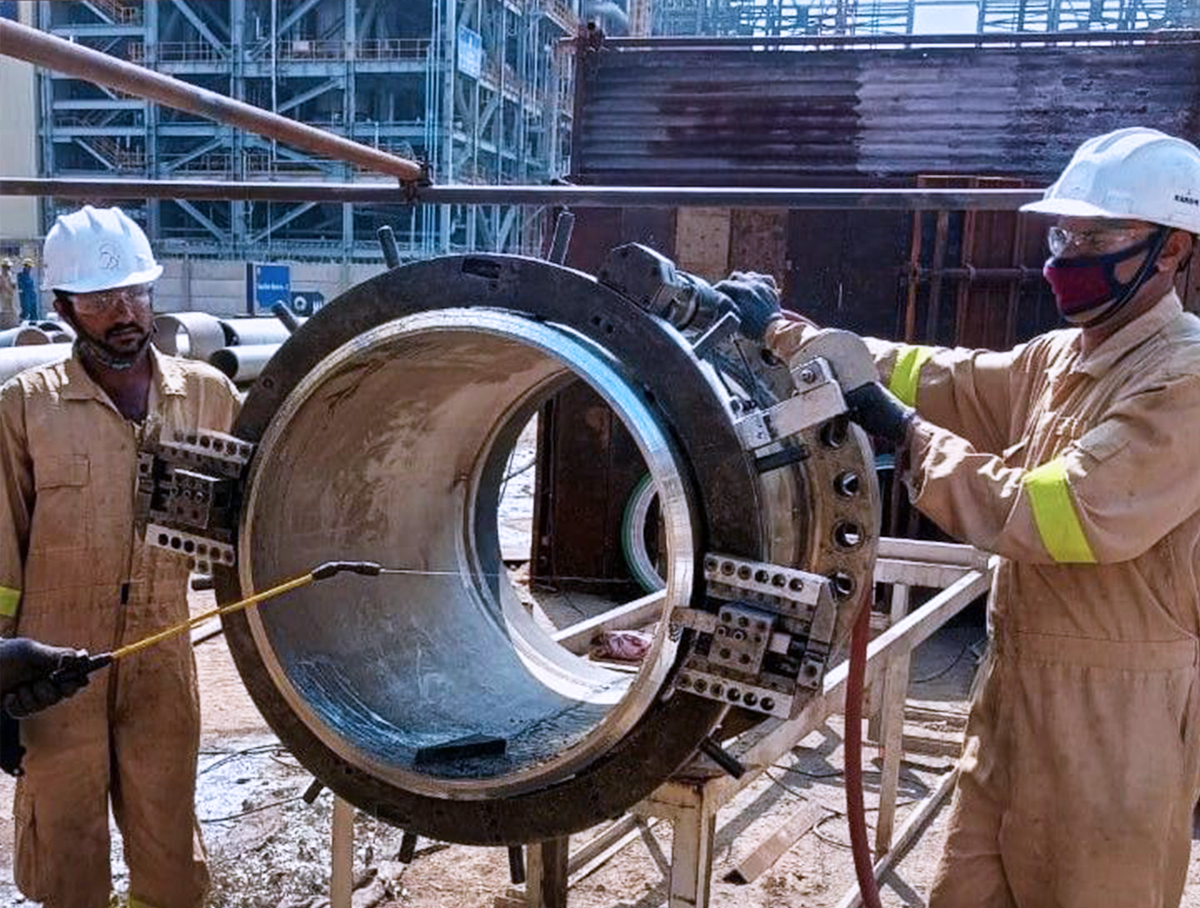Cold cutting is a process that is used to cut through materials without the use of heat or flames and the creation of sparks, making it the safest method for cutting structures in hazardous environments. Common industries that require cold cutting include the oil and gas, materials processing, and petrochemical industries.
Cold Pipe Cutters:
Cold pipe cutters are also known by several other names, most commonly flanged cutters, sectional cutters, flanged lathes, and other combinations of these terms. A pipe cold cutting machine is a circular structure that wraps around the pipe in two halves that are held together by a hinge. Once assembled, the machine operates by rotating the cutting tool around the circumference of the pipe.
The machine’s primary purpose is to make straight or bevel cuts in preparation for welding. There are several types of machines available, including low-profile, medium-profile, and heavy-duty. These machines come in sizes to fit all standard pipe diameters, even up to 177 inches in diameter. An air source or hydraulic pump typically powers these machines.
Benefits of Cold Pipe Cutters:
The two main advantages of cold pipe cutters are convenience and safety. There are no sparks, flames, or airborne contaminants. No heat-affected zone can alter the properties of the material.
Diamond Wire Saws:
Diamond wire saws are used to cut pipes, piles, and foundations underwater. Instead of using a saw blade, a diamond wire saw uses a string of beads that are studded with small diamonds on the outer surface. The circular cross-section of the string makes it less likely to get pinched and stuck, which can sometimes happen with metal saw blades. Like a band saw, when used above the surface, it is not a true cold-cutting process and requires a coolant.
Abrasive Water Jet Cutting:
Abrasive water jet cutting is another method of cutting structures in place without the use of flames or heat. This method is suitable for environments where there is a risk of fire or explosion. This method uses incredibly high water pressure delivered through small holes at approximately 60,000 PSI.
The water contains abrasive materials, such as garnets, which are crushed into small pieces that pass through the water jet. Abrasive water jet cutting cannot be done with hand-held tools. Instead, the nozzle is mounted on a platform that moves along the surface to be cut.
Conclusion:
In short, which cold-cutting method is best depends on what you are cutting, where it is, and the precision you need. For cutting and beveling pipe, a clamshell cutter is the best choice. Because they are easy to set up and there is no risk of sparks. For demolition purposes, diamond wire saws are a good choice for cylindrical shapes.
However, there is a risk of sparks if the right coolant is not used. Abrasive water jet cutting machines are widely used for part manufacturing. However, pipe cold cutting machine suppliers can also use this for demolition and on-site maintenance. With suitable support structures built to support the application, these cutters can be used to cut various shapes in containers or for cutting steel beams and concrete structures.

Leave a Reply